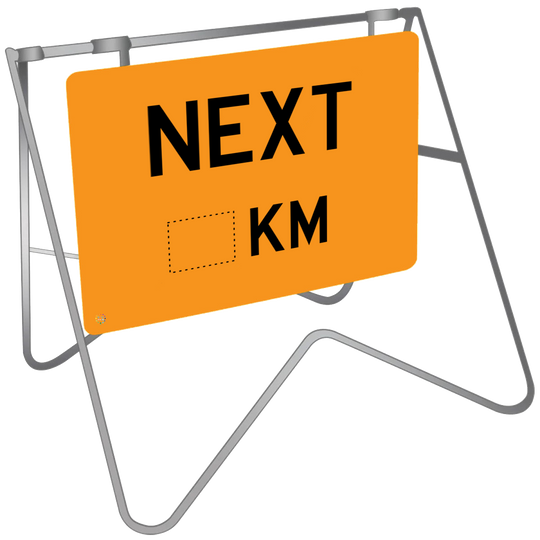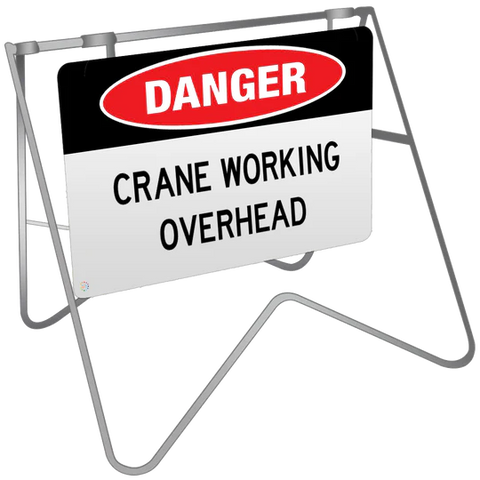Swing Stands for Signs: Versatile Solutions for Displaying Your Messages
Signs are everywhere, guiding us, warning us, and providing essential information. You've probably seen signs on the road, in parking lots, at events, and many other places.

But have you ever wondered how these signs are displayed, especially in outdoor settings? That's where swing stands for signs come into play. In this blog post, we'll explore these versatile sign stands, why they matter, and how they work.
What Are Swing Stands for Signs?
Swing stands for signs are special frames or holders designed to display signs in outdoor environments. These stands allow signs to swing or pivot, providing several benefits for users. They are often used for various types of signage, including traffic signs, parking signs, event signs, and even promotional banners.
Why Swing Stands Matter
Swing stands may not be the first thing that comes to mind when you think about signs, but they are crucial in ensuring that signs are effective and long-lasting. Here are some reasons why swing stands matter:
1. Durability
Outdoor signs face all sorts of weather conditions, from blazing sun to heavy rain and strong winds. Swing stands are typically built to withstand these challenges. They are made from durable materials like steel or aluminium that can resist rust and damage.
2. Visibility
Signs are only effective if people can see them. Swing stands allow signs to be adjusted and positioned for maximum visibility. This is especially important for road signs and event signage, where visibility can impact safety and information dissemination.
3. Flexibility
Sometimes, you need to change the message or location of a sign. Swing stands provide flexibility since you can easily move and adjust the sign. This is handy for events, construction sites, and parking areas where conditions change.
4. Protection
Swing stands help protect both the sign and the stand itself. The swinging or pivoting action of the sign can absorb some of the impact if a vehicle or object accidentally collides with it. This reduces the risk of damage and injury.
5. Easy Installation
Swing stands are designed to be user-friendly. Setting up and installing a sign on one of these stands is typically straightforward and doesn't require specialised tools or skills.
How Swing Stands Work
Now that we understand why swing stands are important, let's take a closer look at how they work:
1. The Frame
A swing stand for signs typically consists of a sturdy frame with one or more arms or brackets. This frame provides the structure and stability for the sign.
2. Sign Attachment
The sign itself is attached to the frame using various methods. Common attachment methods include clips, bolts, or brackets that secure the sign in place.
3. Swinging Mechanism
The magic happens in the swinging mechanism. This part allows the sign to move or pivot while remaining attached to the stand. The swinging action is usually limited within a certain range to ensure the sign doesn't swing too wildly in the wind.
4. Base and Stability
The base of the swing stand is designed to keep the sign stable, even when it's swinging. Some swing stands have weighted bases, while others may be anchored to the ground for stability.
5. Adjustability
Many swing stands offer options for adjusting the angle and height of the sign. This adaptability is vital for ensuring the sign's visibility and readability.
Types of Swing Stands
There are various types of swing stands for signs, each designed for specific purposes. Here are some common types:
1. Swing Frame Stands
These stands have a simple frame with one or two arms that allow the sign to swing in the wind. They are often used for parking signs, directional signs, and real estate signs.
2. Swinging Pavement Signs
Swinging pavement signs are typically seen outside businesses. They consist of a frame with a sign panel that can swing, making them eye-catching for pedestrians.
3. Swinging A-Frame Signs
A-frame signs are popular for events and promotions. Some of them have a swinging feature that adds an extra element of visibility.
4. Swinging Banners
Swinging banner stands are used for displaying banners, often at trade shows or events. They allow banners to sway gently, drawing attention to the message.
Where You Can Find Swing Stands
Swing stands for signs can be found in various places and serve many purposes:
1. Roads and Highways

Traffic signs, such as speed limit signs and warning signs, are often mounted on swing stands. These stands ensure that the signs remain visible and secure.
2. Parking Lots

Parking signs directing drivers to available spaces or indicating restrictions are often displayed on swing stands.
3. Events and Conventions

Event organisers use event swing stands to display signs guiding attendees to different areas, providing event information, or promoting sponsors.
4. Businesses
Storefronts, restaurants, and shops sometimes use swinging pavement signs to attract foot traffic and advertise daily specials.
5. Construction Sites

Construction companies use swing stands for signs like Crane Working Overhead Sign to communicate safety messages, direct traffic, and indicate construction zones.
Tips for Using Swing Stands Effectively
To get the most out of your swing stands for signs, consider these tips:
1. Regular Maintenance
Inspect and maintain your swing stands and signs regularly. This ensures that they remain in good condition and continue to serve their purpose effectively.
2. Proper Signage
Choose signs that are suitable for outdoor use and can withstand the elements. Use high-quality materials for signage to increase durability.
3. Positioning
Place your swing stands in locations where they provide the best visibility. Consider factors like line of sight, traffic flow, and potential obstacles.
4. Compliance
Ensure that your signs and swing stands comply with local regulations and standards, especially for traffic signs and safety signage.
5. Safety First
Always prioritise safety when installing or moving swing stands and signs. Make sure they don't pose hazards to pedestrians or drivers.
Takeaway
Swing stands for signs might not steal the spotlight, but they play a vital role in making sure signs are effective, durable, and visible.
Whether you're driving on the road, parking your car, attending an event, or just walking down the street, you'll likely encounter signs supported by these versatile stands.
Remember, they're there to guide you, inform you, and keep you safe, making them an unsung hero of the signage world.

